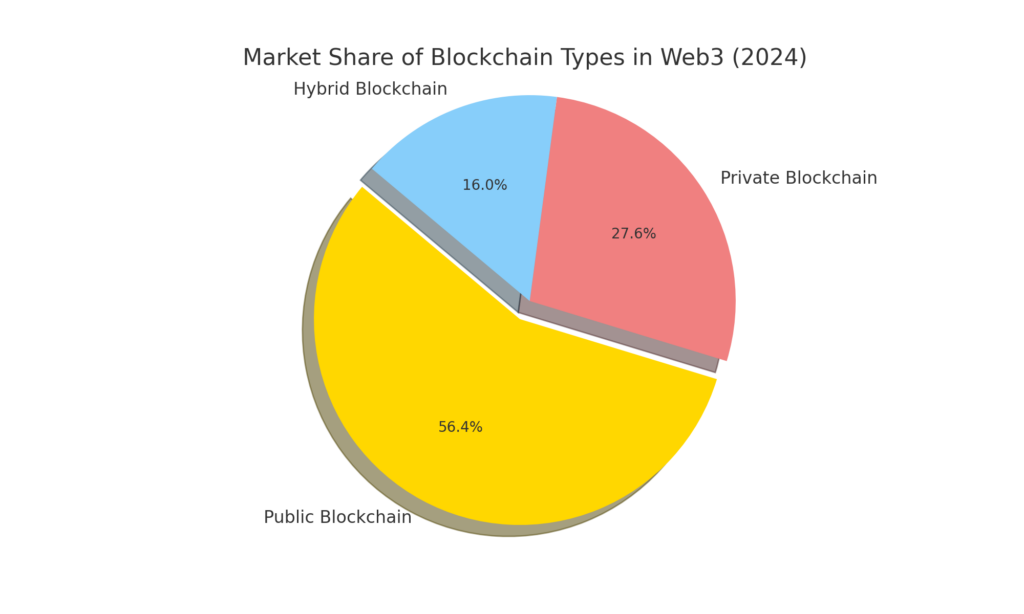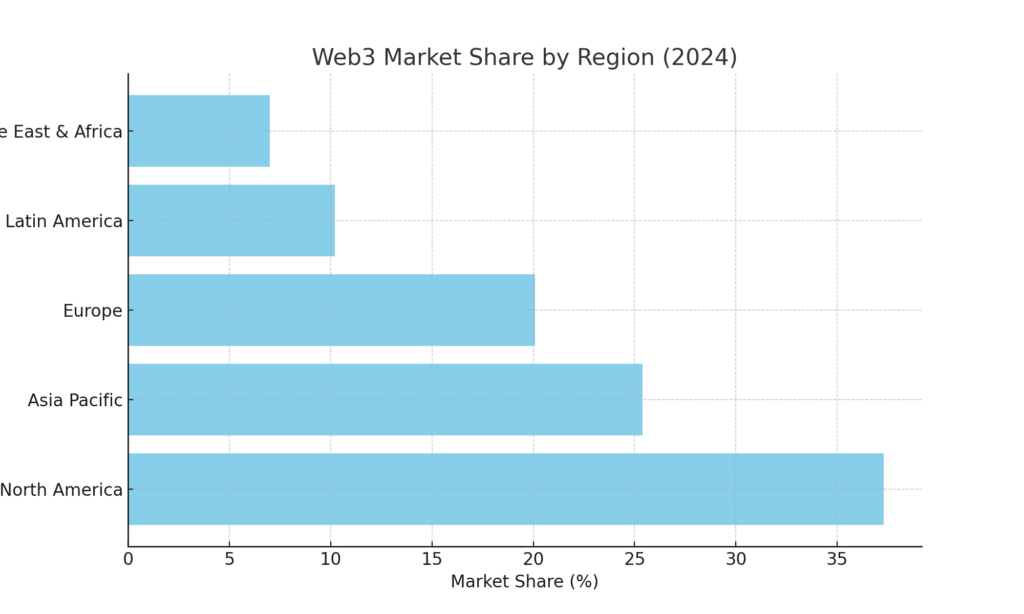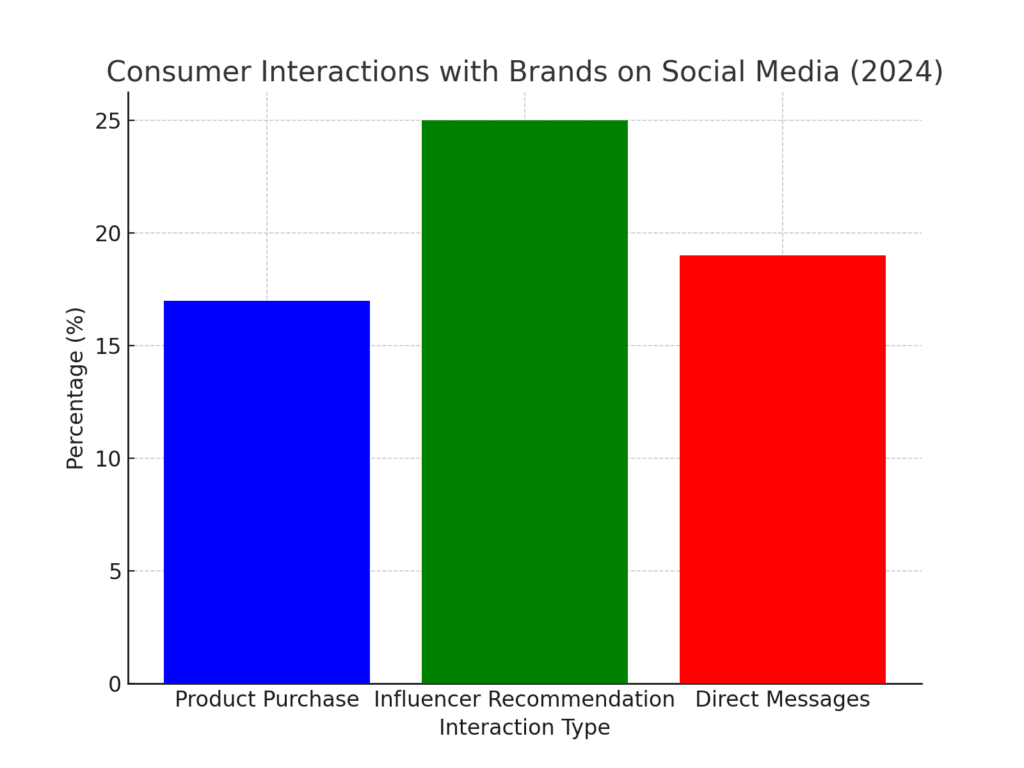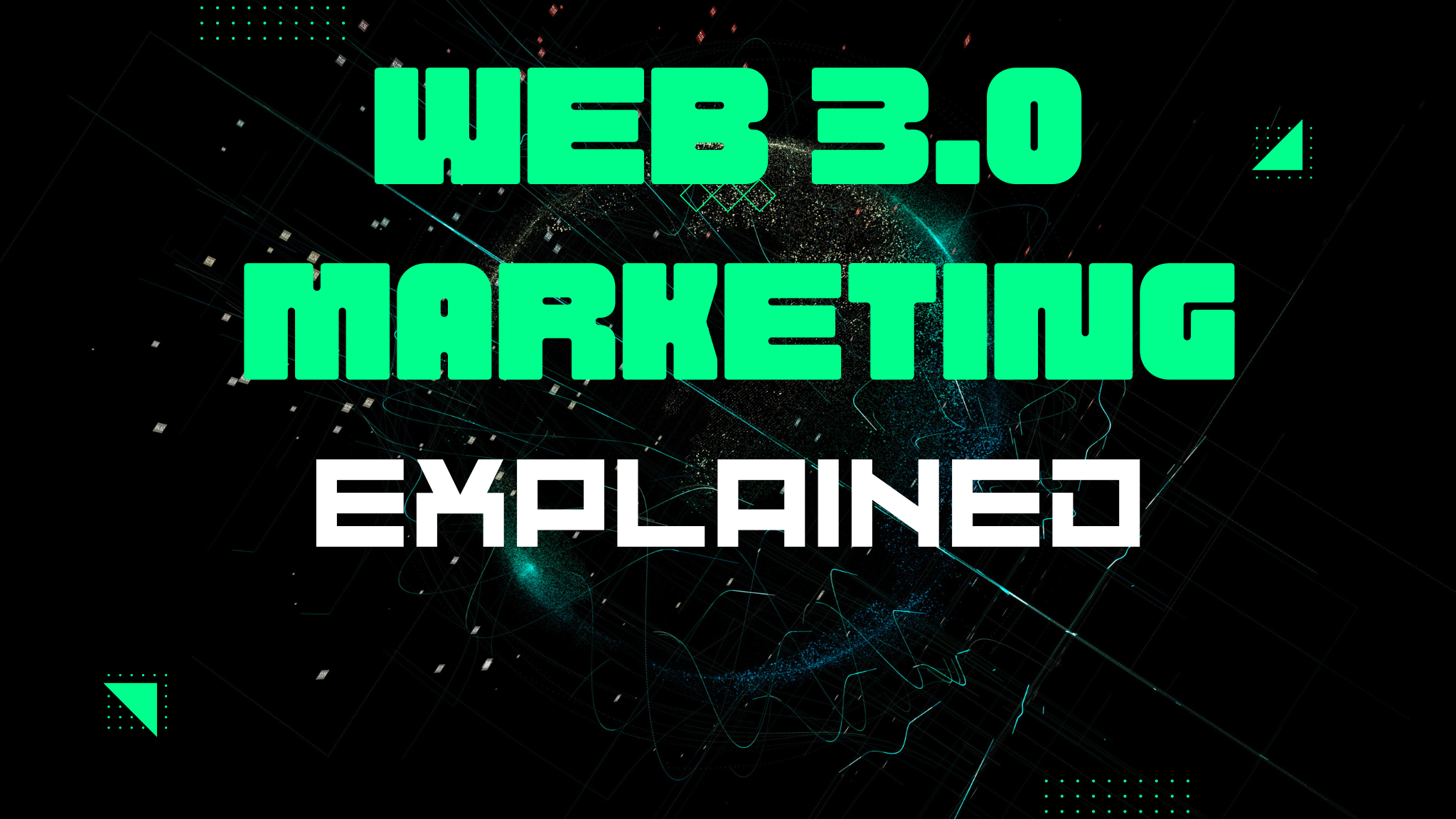As a seasoned digital marketer with over a decade of experience, I’ve seen the landscape evolve at a breakneck pace. From the early days of static websites to the rise of social media giants, change has been the only constant. Now, as we stand on the cusp of a new era – the era of Web3 – it’s time to rethink our approach to marketing once again.
At its core, Web3 is about empowering users and creating a more transparent, secure, and decentralized internet. It’s a vision that challenges the status quo and offers endless possibilities for brands willing to embrace it.
In this post, we’ll explore key Web3 concepts, outline actionable marketing strategies, and spotlight real-world examples of brands embracing Web3. By the end, you’ll have a clear roadmap for integrating decentralized technologies into your own marketing efforts as we move boldly into the next era of the internet.
- What is Web3 Marketing?
- Understanding the Building Blocks of Web3 Marketing
- Creating Your Web3 Marketing Strategy
- Examples of Web3 Marketing Done Right
- Challenges and Opportunities
- The Future is Decentralized – Are You Ready?
- Actionable Steps for Getting Started with Web3 Marketing
- The Skills Every Web3 Marketer Needs
- Conclusion
- Frequently Asked Questions About Web3 Marketing
What is Web3 Marketing?
Web3, short for “Web 3.0,” represents the next generation of the internet, built on the principles of decentralization, transparency, and user empowerment. Unlike the centralized Web2, where a handful of tech giants control user data and online experiences, Web3 aims to put the power back in the hands of users.
At its core, Web3 marketing leverages decentralized technologies such as blockchain, smart contracts, and peer-to-peer networks to create more engaging, transparent, and secure marketing experiences. By embracing Web3 principles, businesses can build trust with their audiences, foster community-driven initiatives, and unlock new avenues for customer engagement.
According to a recent survey by Deloitte, 76% of executives believe that digital assets will serve as a strong alternative to or outright replacement for fiat currencies in the next 5-10 years. This highlights the growing importance of Web3 technologies and their potential impact on various industries, including marketing.

Understanding the Building Blocks of Web3 Marketing
Before we jump into the nitty-gritty of Web3 marketing strategies, let’s take a moment to understand the key technologies and principles that make it all possible:
- Decentralization: Instead of data and apps living on centralized servers, Web3 distributes storage, control and decision-making across a global network of nodes. No single entity owns or governs the system.
- Blockchain: Blockchain serves as the distributed ledger backbone of Web3, recording tamper-proof transactions with unprecedented transparency.
- Non-Fungible Tokens (NFTs): These unique digital assets represent ownership of a wide range of virtual goods, from artworks to recordings to 3D models and more.
- Decentralized Autonomous Organizations (DAOs): Imagine a world where communities can come together and make decisions without a traditional hierarchy. That’s the power of DAOs – decentralized organizations governed by rules encoded in smart contracts.

Creating Your Web3 Marketing Strategy
Now that we’ve got the basics down, let’s explore some practical strategies for leveraging Web3 technologies in your marketing efforts:
1. Build Trust Through Transparency
In a world where data breaches and privacy concerns are all too common, building trust with your audience is paramount. Web3 technologies offer a powerful solution:
- Use blockchain to create immutable records of your marketing activities, from ad impressions to customer interactions.
- Give users control over their data and allow them to opt-in to marketing initiatives.
- Embrace transparency and let your audience see the inner workings of your brand.
2. Reward Loyalty with Tokenized Incentives
Loyalty programs have long been a staple of traditional marketing, but Web3 technologies are taking them to the next level. By leveraging tokenized loyalty programs, businesses can create more engaging and rewarding experiences for their customers.
With tokenized loyalty programs, customers can earn tokens for their interactions with a brand, such as making purchases, leaving reviews, or engaging with content. These tokens can then be redeemed for rewards, discounts, or exclusive experiences.
One example of a successful tokenized loyalty program is the Brave browser, which rewards users with Basic Attention Tokens (BAT) for viewing privacy-respecting ads. Users can then use their BAT to support their favorite content creators or redeem them for various rewards.

3. Empower Your Community
Web3 technologies are inherently community-driven, and this presents a significant opportunity for marketers. By fostering engaged communities around their brand or cause, businesses can tap into the power of peer-to-peer marketing and user-generated content.
One way to build a strong community is through the use of social tokens, which represent membership in a specific community. By holding these tokens, community members gain access to exclusive content, events, and decision-making processes.
Another approach is to leverage decentralized platforms, such as Steemit or Mirror, which reward users for creating and curating high-quality content. By incentivizing user-generated content, these platforms create a more authentic and engaging marketing experience.
4. Experiment with NFTs
NFTs are more than just a buzzword – they’re a powerful tool for creating unique, engaging experiences. Consider:
- Launching limited-edition digital collectibles tied to your brand.
- Creating NFT-based loyalty programs or rewards.
- Partnering with artists and creators to develop one-of-a-kind NFT campaigns.
5. Influencer Marketing in Web3
Influencer marketing has been a powerful tool in the Web2 era, but Web3 technologies are taking it to new heights. In the decentralized web, influencers can create their own tokens, allowing their followers to invest in their success and share in the rewards.
Moreover, Web3 technologies enable more transparent and accountable influencer marketing practices. With blockchain-based smart contracts, brands can ensure that influencers deliver on their promises and that their followers are genuine and engaged.
One example of a Web3 influencer marketing platform is Rally, which allows creators to launch their own digital currencies and build engaged communities around their brand.
Examples of Web3 Marketing Done Right
To bring the potential of Web3 marketing to life, let’s take a look at some real-world examples of successful campaigns and brands that are embracing this new paradigm.
Successful Web3 Marketing Campaigns
- Adidas and the Bored Ape Yacht Club: In December 2021, Adidas launched a successful NFT campaign in partnership with the Bored Ape Yacht Club, a popular NFT collection. The campaign, which included limited-edition NFTs and physical merchandise, generated over $23 million in sales and helped to solidify Adidas’ position as a leader in the Web3 space.
- Taco Bell’s NFT Campaign: In March 2021, Taco Bell launched a series of NFTs featuring original artwork inspired by their menu items. The NFTs sold out in just 30 minutes, with proceeds going to the Taco Bell Foundation’s scholarship fund.
Brands Embracing Web3 Marketing
- Coca-Cola: In July 2021, Coca-Cola launched an NFT campaign featuring digital collectibles inspired by their iconic brand. The campaign was a success, with the NFTs selling for over $575,000 and the proceeds going to the Special Olympics.
- Nike: Nike has been a leader in the Web3 space, filing several patents related to virtual goods and launching its own NFT platform called CryptoKicks. The platform allows users to buy, sell, and trade virtual sneakers, with plans to integrate them into online games and virtual worlds.

| Brand | Campaign | Results |
|---|---|---|
| Adidas | Partnered with the Bored Ape Yacht Club to launch limited-edition NFTs and physical merchandise. | Generated over $23 million in sales and solidified Adidas’ position as a Web3 leader. |
| Taco Bell | Launched a series of NFTs featuring original artwork inspired by their menu items. | Sold out in 30 minutes, with proceeds going to the Taco Bell Foundation’s scholarship fund. |
| Coca-Cola | Released a collection of digital collectibles inspired by their iconic brand. | NFTs sold for over $575,000, with proceeds donated to the Special Olympics. |
| Nike | Developed a patent for “CryptoKicks” – a platform for buying, selling, and trading virtual sneakers. | Positioned Nike at the forefront of the virtual goods market. |
These examples showcase the incredible potential of Web3 marketing, but they’re just the tip of the iceberg. As more brands begin to experiment with decentralized technologies, we can expect to see even more innovative and impactful campaigns emerge.
Challenges and Opportunities
Of course, the path to Web3 marketing success is not without its obstacles. As a marketer, you’ll need to navigate:
- Regulatory and legal considerations, particularly around data privacy and consumer protection.
- The need for user education and adoption, as many consumers are still new to Web3 concepts.
- Technical challenges around scalability, interoperability, and integration with existing marketing tools.
But with great challenges come great opportunities. By embracing Web3 technologies, you can:
- Build deeper, more authentic relationships with your audience.
- Create new revenue streams and business models.
- Position your brand as a leader in the next era of the internet.
The Future is Decentralized – Are You Ready?
As I reflect on my own journey in digital marketing, I can’t help but feel excited about the possibilities that Web3 presents. It’s a chance to break free from the centralized models of the past and create something truly revolutionary – a more open, transparent, and user-centric internet.
But the transition to Web3 won’t happen overnight. It will require a fundamental shift in the way we think about marketing, a willingness to experiment and take risks, and a commitment to putting the needs of our audience first.
So, my fellow marketers, I ask you this: Are you ready to embrace the future of decentralized marketing? Are you ready to lead the charge and help shape the next era of the internet?
If the answer is yes, then let’s get started. The future is waiting, and it’s up to us to build it.

Actionable Steps for Getting Started with Web3 Marketing
Hopefully the principles and brand spotlights provide inspiration as you plan your first Web3 activations. Here is a recommended roadmap with specific actionable next steps:
Discover and Learn
- Immerse yourself in industry content, online communities, trend reports and expert perspectives. Don’t just copy others, but let these insights spark creative applications for your unique brand.
- Experiment and Engage
a) Open a Web3 wallet to experience functionality firsthand. b) Purchase an NFT from an artist you admire to directly support creators in this ecosystem. c) Join a DAO aligned to your interests and engage with proposals and community discourse. - Identify Your Niche Based on your brand attributes, target audience interests and Web3’s rapid evolution, narrow down the channel(s) and use case(s) you aim to prioritize in your initial pilots.
Start Small
- Outline 3 potential campaigns aligned to the niche opportunity areas identified above.
- Detail the user value proposition, implementation requirements and success metrics for quantifying performance.
- Socialize these ideas with internal and external stakeholders to gather feedback and refine the activation plan.
- Launch a targeted pilot program focused on learning rather than scale or profit from the outset. Measure results but equally prioritize gathering qualitative feedback directly from your Web3 community.
Scale Impact
- Based on learnings, iterate your Web3 go-to-market plan, focusing on initiatives revealing the most resonance.
- Gradually allocate additional resources to build out capabilities, strategically hire niche talent and forge long term partnerships with aligning creators.
- With refined operations and credibility established through early wins, craft an expanded yet focused content roadmap, community activation plan and incentive strategy.
While far from comprehensive, this gives you an actionable template for kickstarting your Web3 marketing endeavors in alignment with the core principles we’ve covered. The most critical next step is simply to get started!

The Skills Every Web3 Marketer Needs
To thrive in the world of Web3 marketing, you’ll need to develop a unique set of skills and competencies. Here are some of the key areas to focus on:
- Technical Literacy: While you don’t need to be a blockchain developer to succeed in Web3 marketing, a basic understanding of the underlying technologies is essential. Familiarize yourself with concepts like smart contracts, decentralized storage, and token economics.
- Creative Problem-Solving: Web3 is still a relatively new and uncharted territory, which means there’s no playbook to follow. To succeed, you’ll need to be able to think creatively, solve complex problems, and develop innovative solutions.
- Community Building: Web3 is all about community – from DAOs to social tokens to decentralized networks. As a marketer, you’ll need to know how to build, engage, and mobilize communities around your brand or cause.
- Adaptability: The Web3 landscape is constantly evolving, with new technologies and trends emerging all the time. To stay ahead of the curve, you’ll need to be able to adapt quickly, learn on the fly, and pivot your strategies as needed.
- Ethical Mindset: Web3 is built on principles of transparency, trust, and user empowerment. As a marketer in this space, it’s crucial to operate with integrity and always put the needs of your audience first. Avoid exploitative tactics or anything that could undermine the trust you’ve built with your community.
Conclusion
Marketing is storytelling. And the story of Web3 is one of world-changing potential. Its plot arcs towards decentralization redistributing power, putting users back in control. Blockchains enabling transparency between consumers and brands based on aligned incentives and values in service of authentic relationships. Ultimately, Web3 makes space for renewed trust – where brands, creators and communities cooperate to advance shared goals rather than competing zero-sum games of the past.
But this future hinges on people – on product managers coding dignity into transactions, on marketers nurturing seeds of community, and on all of us learning a new way rooted in openness, not control or domination.
The coming Web3 wave will challenge us to rise as marketers of integrity. We’ll need to serve first, cede the mic to marginalized voices, and embrace collective leadership models rather than top-down authority.
At its heart, Web3 is a new story inviting us into unknown possibilities as we shed limiting assumptions. As marketers at the frontier, we get the privilege of writing the next chapter. Our readiness will set the tone.
We are the ones we’ve been waiting for.
Frequently Asked Questions About Web3 Marketing
What is Web3 marketing and how does it differ from traditional marketing?
Web3 marketing leverages decentralized technologies like blockchain to create transparent, user-centric campaigns. It focuses on community building, token incentives, and peer-to-peer interactions, unlike traditional centralized marketing.
What are the key components of a successful Web3 marketing strategy?
A successful Web3 marketing strategy includes understanding the target audience, developing clear value propositions, building strong communities, leveraging influencers and partnerships, optimizing content, ensuring compliance, and measuring performance.
How can brands measure the success of their Web3 marketing campaigns?
Brands can measure Web3 marketing success by tracking key performance indicators (KPIs) such as user engagement, community growth, token adoption, and return on investment (ROI). Analyzing on-chain data provides valuable insights.
What role do NFTs play in Web3 marketing, and how can brands leverage them?
NFTs enable brands to create unique digital assets, loyalty programs, and exclusive experiences. They can be used for customer rewards, limited-edition collectibles, and immersive brand storytelling, fostering deeper user engagement and loyalty.
How important is community building in Web3 marketing, and what strategies work best?
Community building is crucial in Web3 marketing. Effective strategies include fostering open communication, offering token incentives, hosting events, collaborating with influencers, and empowering users to contribute and share ownership.
What are some examples of successful Web3 marketing campaigns by well-known brands?
Successful Web3 campaigns include Adidas’ partnership with Bored Ape Yacht Club, Coca-Cola’s NFT collectibles for charity, and Taco Bell’s NFT-based scholarship fundraiser. These campaigns leveraged NFTs, community engagement, and clear brand alignment.
How can brands ensure compliance and mitigate risks when venturing into Web3 marketing?
Brands should stay informed about evolving regulations, work with legal experts, conduct thorough due diligence on partners, and prioritize user privacy and security. Transparent communication and responsible innovation are key.
What skills and knowledge are essential for Web3 marketing professionals?
Web3 marketers need a blend of traditional marketing skills and understanding of blockchain, tokens, NFTs, and decentralized communities. Adaptability, creativity, and a user-centric mindset are crucial in this fast-evolving space.
How can brands integrate Web3 marketing with their existing digital marketing efforts?
Brands can integrate Web3 by incorporating NFTs into loyalty programs, using decentralized social media for community engagement, and leveraging blockchain for transparent influencer partnerships. Seamless user experience is key.
What does the future hold for Web3 marketing, and how can brands prepare for it?
The future of Web3 marketing will see increased adoption, innovation in NFTs and tokens, and deeper integration with metaverse experiences. Brands should prioritize learning, experimentation, and agility to stay ahead in this transformative landscape.
